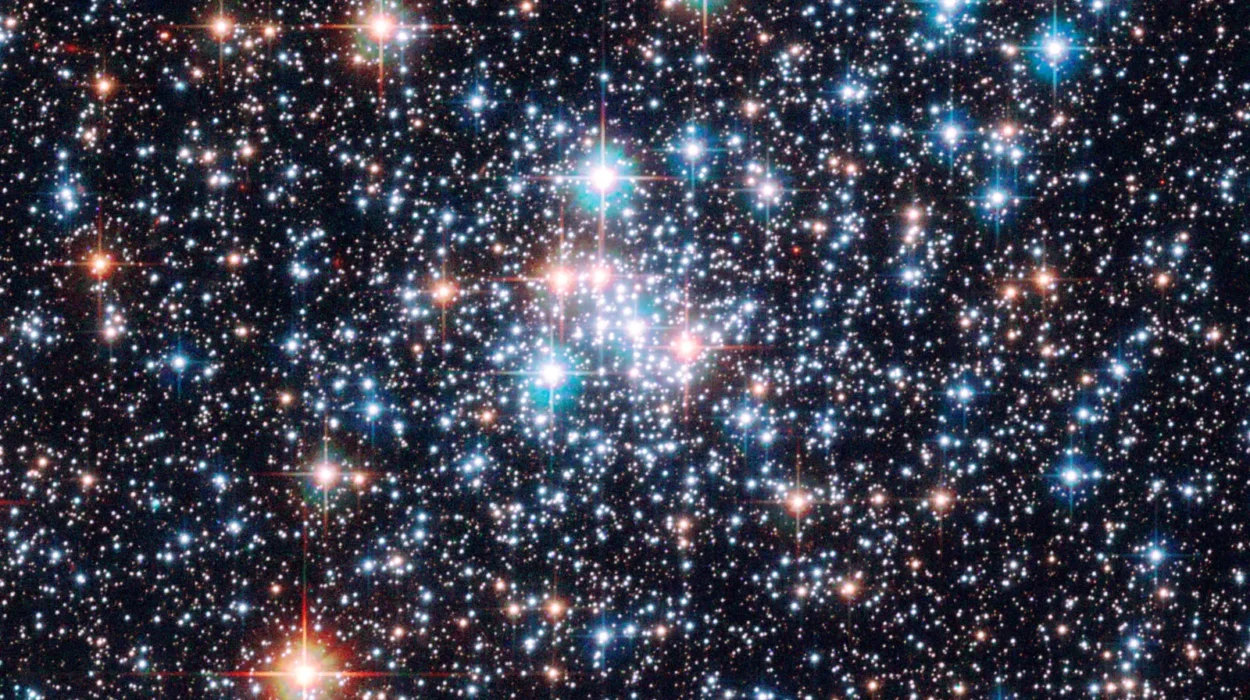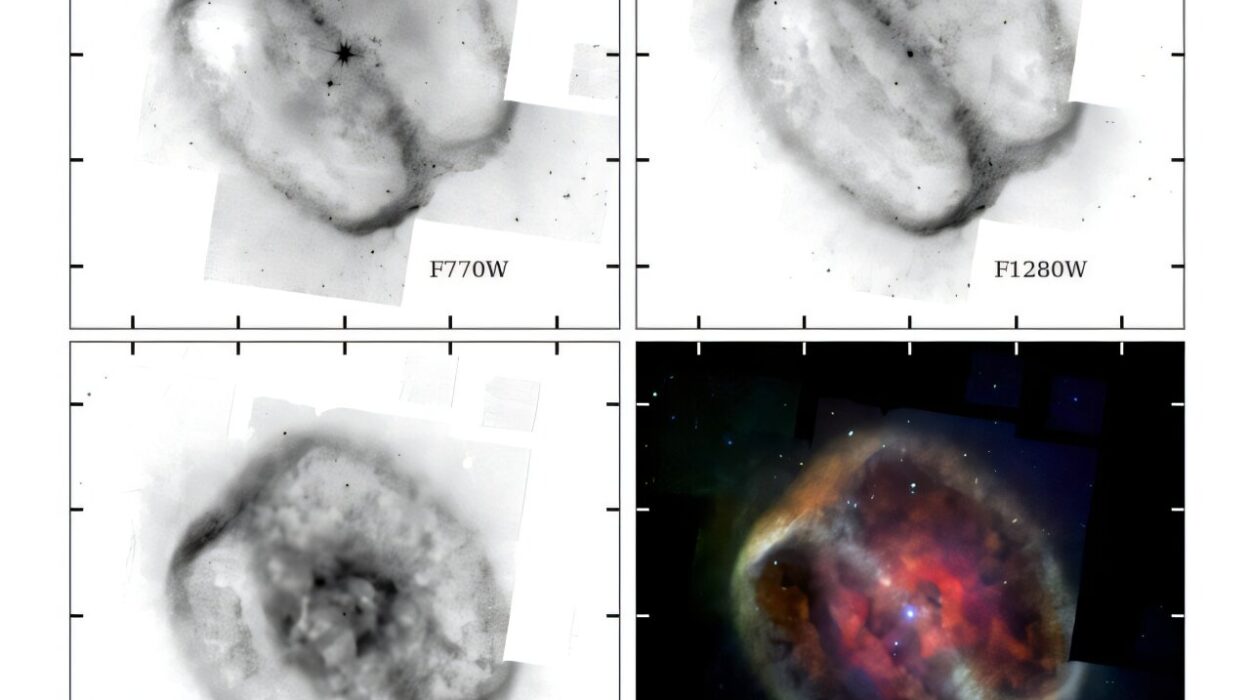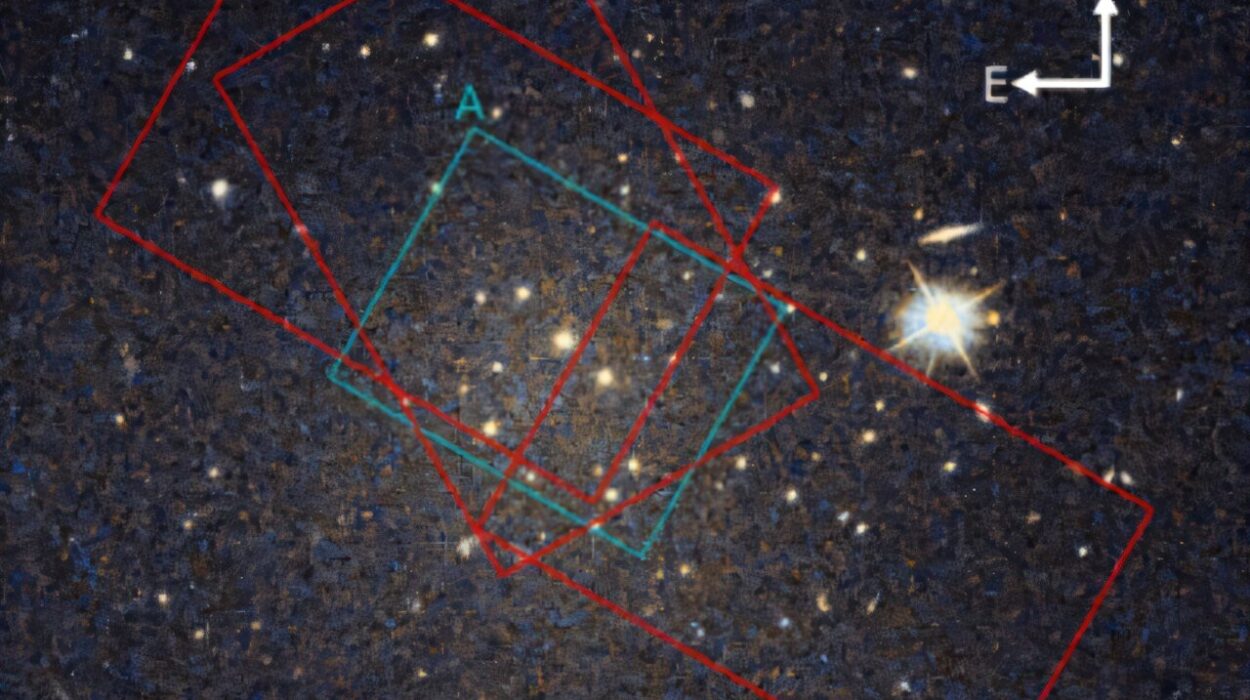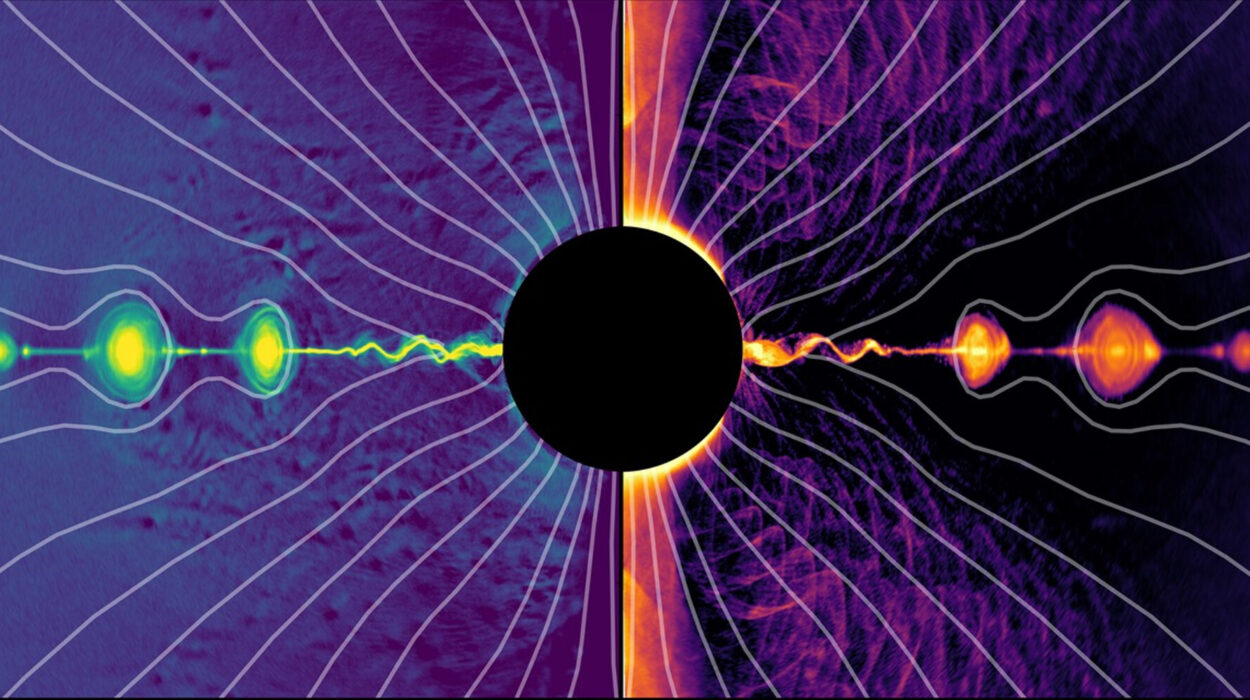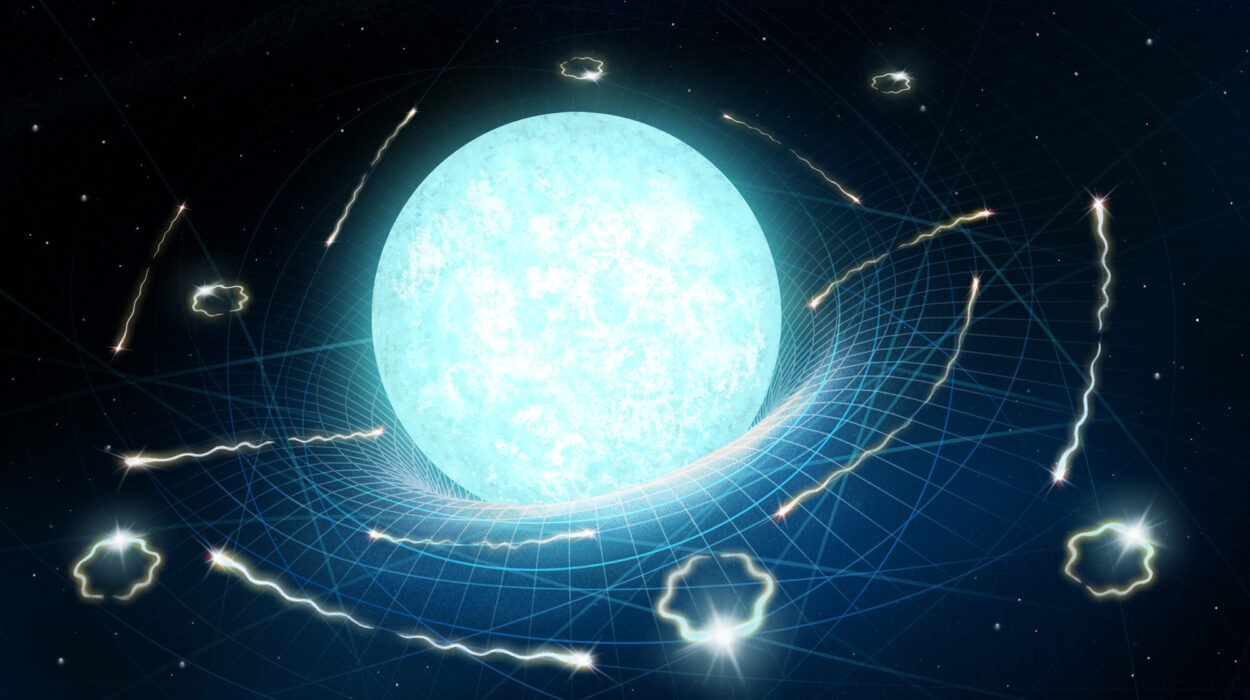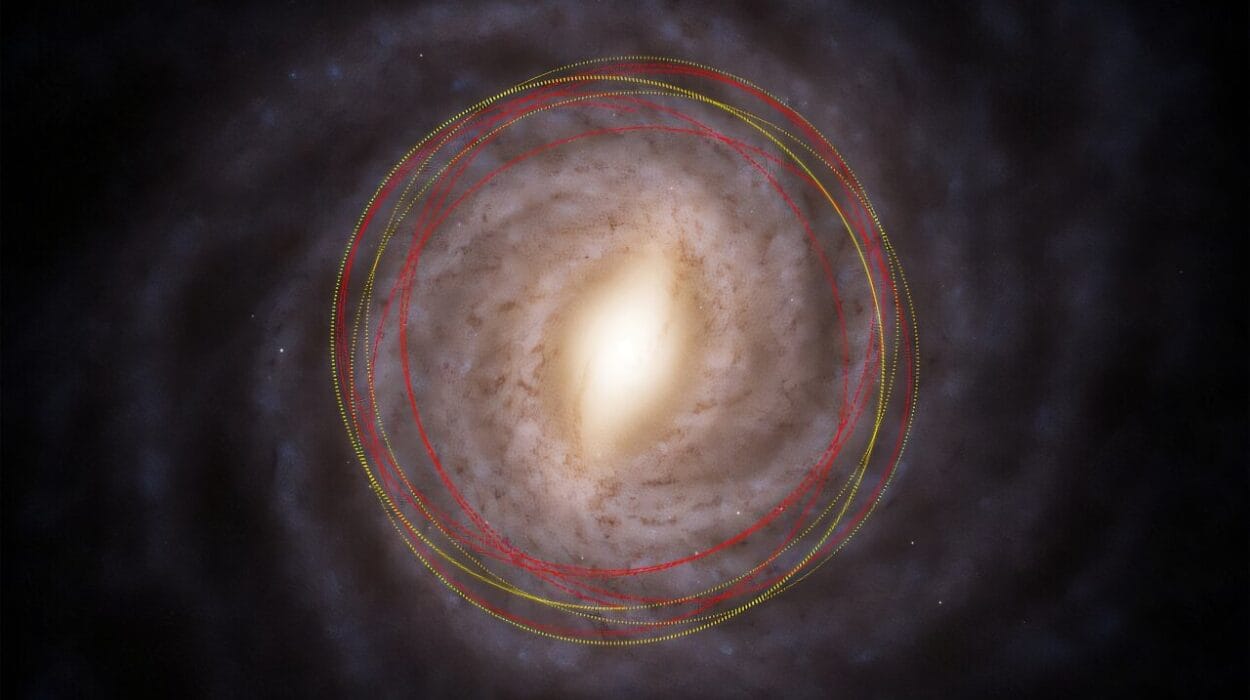The universe, vast and ancient, is stitched together by invisible threads of matter that weave galaxies into a grand cosmic web. For decades, astronomers suspected that these immense filaments of gas and galaxies formed the scaffolding of the cosmos, but only in recent years have telescopes become powerful enough to reveal them in detail. Now, a new discovery has illuminated one of the most extraordinary of these threads—a rotating galaxy filament more than 5.5 million light years long, connecting 14 galaxies in a cosmic dance.
This discovery, reported by a team of astronomers led by Madalina N. Tudorache of the University of Cambridge, is based on data from the MeerKAT International Giga-Hertz Tiered Extragalactic Exploration (MIGHTEE-HI) survey. It represents not only a spectacular observational achievement but also a profound step forward in understanding how galaxies form, grow, and align within the universe’s largest structures.
What Are Galaxy Filaments?
Galaxy filaments are the largest known structures in the universe, vast tendrils composed of galaxies, stars, and enormous rivers of gas. These structures stretch for tens or even hundreds of millions of light years, acting as highways that funnel matter and energy into galaxies. Without these filaments, galaxies like our own Milky Way would be starved of fuel, unable to sustain star formation or grow over cosmic time.
At the heart of these filaments lies neutral atomic hydrogen (HI)—a form of cold gas that astronomers can detect using radio waves. Observing HI is like tracing the lifeblood of the universe, because it is the raw material from which stars are ultimately forged. By mapping this invisible hydrogen, scientists can chart how galaxies draw in matter from the cosmic web, and in turn, how they evolve from small, fledgling systems into vast spirals or giant ellipticals.
A New Spinning Filament
The newly detected filament was found in the COSMOS field, a well-studied region of the sky rich with galaxies. By carefully analyzing the recessional velocities of the 14 galaxies within this filament, Tudorache and her colleagues showed that they occupy a remarkably narrow range of motion: between 9,230 and 9,700 kilometers per second. This tight alignment suggests not a random grouping, but a coherent physical structure—galaxies strung together like pearls on a cosmic necklace.
What makes this filament particularly fascinating is not only its length—about 5.5 million light years—but also its behavior. The galaxies show strong evidence of rotating around the spine of the filament itself, as if the entire structure were twisting like a slowly turning rope across space.
This marks one of the largest spinning cosmic structures ever observed, a phenomenon that challenges and enriches our understanding of how galaxies acquire angular momentum—the spin that shapes their disks and spirals.
The Larger Cosmic Web
The filament does not exist in isolation. Observations suggest that it is embedded within a much larger cosmic web structure spanning at least 49 million light years. This larger filamentary network is astonishingly vast, with a thickness between 2.6 and 3.3 million light years.
The 14 HI galaxies are found to be strongly aligned with this larger structure, strengthening the idea that galaxies do not spin independently of their environment but are deeply influenced by the flows of matter in the cosmic web. Just as rivers carve valleys and shape landscapes, streams of cosmic gas appear to direct how galaxies spin and grow.
An Early Stage of Evolution
Another striking result of this discovery is the suggestion that the filament is in an early evolutionary stage. The galaxies within it are relatively cool in their motions, showing a low dynamical temperature—a sign that they have not yet experienced the violent collisions and turbulence that often disrupt filaments over billions of years.
Because of this youthfulness, the filament still preserves the pristine imprint of cosmic matter flows, offering astronomers a rare glimpse into the early processes of structure formation. It is as though we are witnessing a bridge of galaxies still under construction, carrying the marks of the primordial currents that first shaped it.
Why This Discovery Matters
The detection of this rotating filament is more than just another entry in the catalog of cosmic wonders. It touches on some of the most fundamental questions in astrophysics:
- How do galaxies acquire their spin?
- What role does the cosmic web play in shaping galaxies over time?
- How do flows of hydrogen gas sustain galactic growth and star formation?
By showing that galaxies’ angular momentum is intimately connected to the filaments in which they reside, the MIGHTEE-HI survey strengthens the view that the cosmic web is not just scaffolding but a dynamic, evolving system that actively molds galaxies.
Furthermore, by focusing on neutral hydrogen, this work opens a new observational window into the universe’s hidden skeleton. Unlike stars or dust, hydrogen gas reveals the underlying flows that are otherwise invisible, helping astronomers map the universe’s architecture with unprecedented clarity.
A Glimpse Into the Universe’s Grand Design
Discoveries like this one remind us that the universe is not random chaos but an interconnected system with structure, rhythm, and motion on scales almost beyond imagination. The idea that entire galaxies can spin around a filament stretching millions of light years evokes a sense of grandeur that blends scientific rigor with poetic awe.
In the words of the researchers, this filament shows “the imprint of cosmic matter flow preserved over cosmic time.” It is a snapshot of the universe’s ongoing story, a reminder that we live inside a cosmic web whose strands continue to shape the galaxies, stars, and even the atoms that make up our own bodies.
And so, as our telescopes reach deeper into space and time, we uncover not only new objects but also new patterns—threads of connection that bind the universe together. This spinning filament, revealed by the MIGHTEE-HI survey, is more than just a discovery; it is a revelation of the hidden choreography of the cosmos.
More information: Madalina N. Tudorache et al, A 15 Mpc rotating galaxy filament at redshift z = 0.032, arXiv (2025). DOI: 10.48550/arxiv.2508.13053

